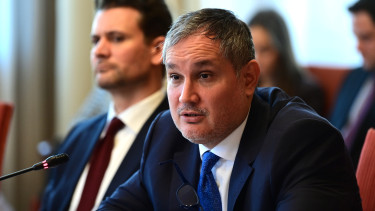Respiratory infections kick down the door in Hungary

On the 40th week of 2024 (30 September-6 October), 228,000 people turned to the doctor with acute respiratory infections, including 18,600 people with flu-like symptoms, according to data by the National Centre for Public Health and Pharmacy (NNGYK).
Both figures are the highest for the last three flu-seasons.

In the current flu-season, the surveillance service monitors the occurrence of influenza-like illnesses and acute respiratory infections based on data provided by 1,304 general practitioners and general paediatricians, which compares with 1,317 in the previous flu-season.
A total of 64 samples were tested, of which 22 came back COVID-19 positive, i.e. they detected coronavirus in 34.4% of the samples. This compares with 35% a year ago, but then only 20 samples were tested and 7 showed the presence of SARS-CoV-2.
188 people with severe acute respiratory infection (SARI) were hospitalised on the 40th week, of whom 24 (or 12.8%) required intensive care. The respective figures for the 40th week of 2023 were 154 people in hospital, and 17 (11.0%) in ICUs.
Further breakdown shows that 116 people (almost 62% of SARI patients) were hospitalised with coronavirus infection, which compares with 103 (67%) a year ago.
Of the 188 people in hospital with SARI, 42 (22.3%) were aged two or younger, while 92 (48.9%) were 60 or older. Also, 77 (66.4%) of the 116 COVID-19 patients were over 60 years of age.
A year ago, of the 157 people in hospital with SARI, 27 (17.5%) were aged two or younger, while 96 (62.3%) were 60 or older. Also, 83 (80.6%) of the 103 COVID-19 patients were over 60 years of age.
The age breakdown of people seeking medical help with ARI and flu-like symptoms are shown below, including a comparison with data a year ago.


The majority of ARI patients belonged in the 0-14 age group throughout the flu-season last year, while the share of people going to the doctor with flu-like symptoms was the highest in the 15-34 age group up to the 2nd week of this year when the youngest were in majority until the 40th week bar a couple of weeks towards the end.
The NNGYK has not yet issued a statement on the availability of flu vaccines, but they should be in pharmacies shortly, by the end of October at the latest. The vaccine becomes fully effective two to three weeks after the jab, and their efficacy lasts for months. The virus constantly changes that is why new shots are developed every year.


We can expect the flu-season to become more severe by the 49th or 50th week this year and peak between the 6th and 9th weeks of 2025, as the graphs below suggest.


Cover photo (for illustration purposes only): Getty Images






